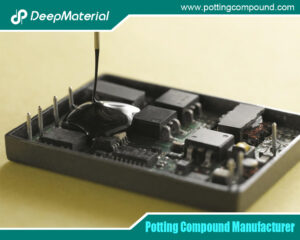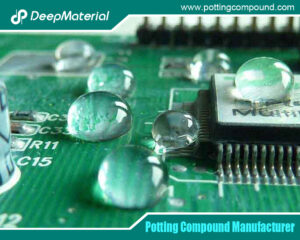
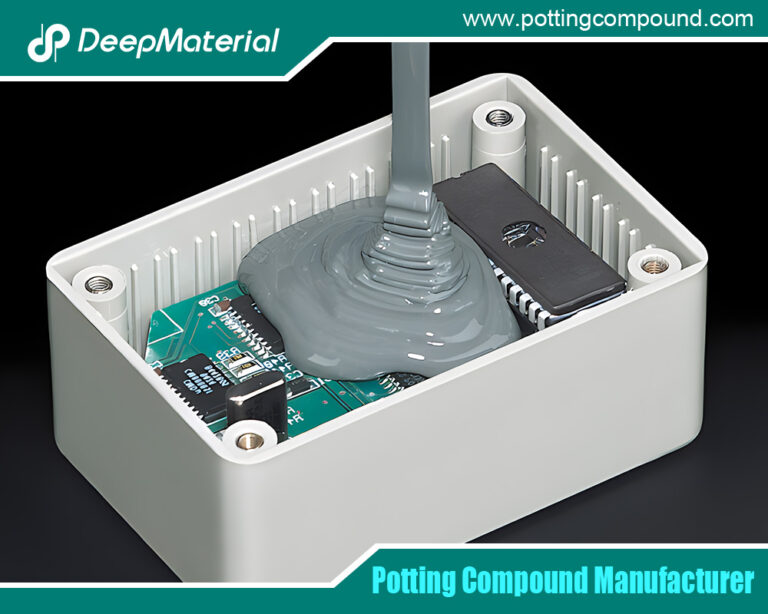
Circuit Board Potting Compound: Essential Protection for Electronic Assemblies
- Electronic Potting Material Manufacturer
- June 27, 2024
- Acrylic Conformal Coating, adhesive glue manufacturer, circuit board potting, circuit board potting compound, Connector Potting Compound, Electronic Conformal Coating, electronic epoxy encapsulant potting compounds, electronic potting compound, epoxy conformal coating, epoxy potting compound, Flexible Potting Compound, industrial adhesive suppliers, Industrial Conformal Coating, LED Potting Compound, One Part Epoxy Adhesive, pcb conformal coating, PCB Potting Compound, polyurethane potting compound, potting material for electronic components, potting material for electronics, potting pcb, Silicone Conformal Coating, Silicone Potting Compound, Urethane Conformal Coating, uv conformal coating manufacture, UV Cure Conformal Coating, UV Cure Potting Compound, UV curing potting compound, uv epoxy electronic adhesive glue, Waterproof Conformal Coating, waterproof potting compound, what is pcb potting
Circuit Board Potting Compound: Essential Protection for Electronic Assemblies
In the rapidly advancing world of electronics, ensuring the longevity and reliability of electronic assemblies is paramount. One critical protection method is using potting compounds for circuit boards. This comprehensive guide delves into the nature of circuit board potting compounds, their types, applications, and benefits, providing a detailed understanding of their role in safeguarding electronic devices.
What is a Circuit Board Potting Compound?
The circuit board potting compound is a protective material that encapsulates electronic assemblies, including printed circuit boards (PCBs). The potting process involves filling the electronic assembly with a liquid compound that hardens to form a solid, protective layer. This encapsulation protects against environmental hazards, mechanical stress, and electrical interference.
Types of Potting Compounds
Potting compounds are available in various types, each with distinct properties tailored to specific applications. The primary types include:
- Epoxy Resins
- Polyurethane (PU) Compounds
- Silicone Compounds
- Acrylic Compounds
- Epoxy Resins: Epoxy resins are widely used due to their excellent adhesion, mechanical strength, and chemical resistance. They are ideal for applications requiring a durable and rigid protective layer. Epoxy resins provide superior protection against moisture, chemicals, and physical impact, making them suitable for harsh environments.
- Polyurethane (PU) Compounds: Polyurethane compounds balance flexibility and durability. They are known for their excellent electrical properties and resistance to abrasion and impact. PU compounds are often used in applications where mechanical stress and vibrations are a concern, as their flexibility helps absorb these forces.
- Silicone Compounds: Silicone potting compounds are renowned for their thermal stability and flexibility over a wide temperature range. They provide excellent protection against moisture and are highly resistant to UV radiation and weathering. Silicone compounds are commonly used in automotive and aerospace applications where temperature extremes are prevalent.
- Acrylic Compounds: Acrylic potting compounds are typically used for applications requiring transparency or UV stability. They offer good adhesion and electrical properties, though they may not provide the same chemical and mechanical resistance level as epoxies or polyurethanes. Acrylics are often used in applications where visual inspection of the encapsulated components is necessary.
Applications of Potting Compounds
Potting compounds are utilized in a wide array of applications across various industries, including:
- Consumer Electronics
- Automotive Industry
- Aerospace and Defense
- Medical Devices
- Industrial Equipment
- Consumer Electronics: In consumer electronics, potting compounds protect circuit boards from moisture, dust, and physical damage. Smartphones, tablets, and wearable devices often employ potting to enhance their durability and reliability, ensuring they can withstand everyday use and exposure to elements.
- Automotive Industry: The automotive industry relies on potting compounds to protect electronic control units (ECUs), sensors, and other critical components from harsh conditions such as extreme temperatures, vibrations, and chemical exposure. Potting ensures the longevity and performance of automotive electronics, contributing to vehicle safety and functionality.
- Aerospace and Defense: Aerospace and defense applications demand the highest levels of reliability and protection. Potting compounds in these fields must withstand extreme temperatures, mechanical stress, and environmental exposure. They protect critical aircraft, satellites, and military equipment components, ensuring their functionality in demanding conditions.
- Medical Devices: Medical devices often incorporate potting compounds to safeguard sensitive electronics from moisture, chemicals, and physical impact. The reliability of these devices is crucial, as they are used in life-saving applications. Potting compounds help maintain the integrity and performance of medical electronics, from diagnostic equipment to implantable devices.
- Industrial EquipmentIndustrial environments pose numerous challenges, including exposure to chemicals, dust, and mechanical wear. Potting compounds protect the electronics used in machinery, control systems, and sensors, ensuring their reliability and reducing the risk of equipment failure.
Benefits of Potting Compounds
The use of potting compounds offers several significant benefits, including:
- Environmental Protection
- Mechanical Protection
- Electrical Insulation
- Thermal Management
- Enhanced Reliability and Longevity
- Environmental Protection: Potting compounds provide a robust barrier against moisture, dust, chemicals, and other environmental contaminants. This protection is critical in preventing corrosion and short circuits, which can lead to device failure.
- Mechanical Protection: The encapsulation process provides the circuit board with mechanical strength, protecting it from physical impact, vibrations, and mechanical stress. This is especially important in applications where the electronic assembly is subject to movement or harsh operating conditions.
- Electrical Insulation: Potting compounds offer excellent electrical insulation properties, preventing short circuits and protecting against electrical interference. This ensures the reliable operation of the electronic assembly and reduces the risk of electrical faults.
- Thermal Management: Certain potting compounds are designed to enhance thermal management by dissipating heat generated by electronic components. This helps maintain optimal operating temperatures and prevents overheating, which can degrade the performance and lifespan of the device.
- Enhanced Reliability and Longevity: By protecting against environmental and mechanical stresses, potting compounds significantly enhance the reliability and longevity of electronic assemblies. This reduces the risk of failure and maintenance costs, ensuring consistent performance over the device’s lifecycle.
Considerations for Choosing Potting Compounds
Selecting the appropriate potting compound involves considering several factors:
- Application Environment
- Thermal Requirements
- Electrical Properties
- Mechanical Properties
- Ease of Application
- Application Environment Understanding:the environment in which the electronic assembly will operate is crucial. Factors such as temperature range, exposure to moisture and chemicals, and mechanical stresses must be considered when choosing a potting compound with suitable properties.
- Thermal Requirements: The potting compound’s thermal conductivity and stability are critical for high-power or temperature variations applications. Compounds with good thermal management properties help dissipate heat and maintain stable operating temperatures.
- Electrical Properties: The potting compound’s dielectric strength and insulation properties are essential to ensure reliable electrical performance. The compound should provide adequate electrical insulation to prevent short circuits and protect against electrical interference.
- Mechanical Properties: Thepotting compound’s mechanical strength and flexibility must match the application’s requirements. Rigid compounds provide excellent protection against impact, while flexible compounds are better suited for applications involving vibrations and mechanical stress.
- Ease of Application: Thepotting process should be efficient and manageable. Factors such as curing time, viscosity, and application method (manual or automated) influence the ease of application. Selecting a compound that fits the manufacturing process can improve production efficiency and reduce costs.
Challenges and Solutions
While potting compounds offer numerous benefits, there are also challenges to consider:
- Curing Time
- Reworkability
- Material Compatibility
- Cost
- Curing Time: Some potting compounds require long curing times, slowing production. Solutions include using compounds with faster curing times or implementing heat curing to accelerate the process.
- Reworkability: Reworking potted assemblies can be challenging, as the compound forms a solid layer. Design considerations such as using removable covers or selecting reworkable compounds can mitigate this issue.
- Material Compatibility: Compatibility between the potting compound and the materials used in the electronic assembly is crucial. Incompatible materials can lead to adhesion issues or chemical reactions. Thorough testing and material selection can address compatibility concerns.
- Cost: High-qualitypotting compounds can be expensive. Balancing cost with performance requirements involves selecting compounds that meet essential protection needs without unnecessary features. Bulk purchasing and optimizing the application process can also help manage costs.
Future Trends in Potting Compounds
As technology evolves, potting compounds continue to advance, offering new features and improved performance. Some emerging trends include:
- Environmentally Friendly Compounds
- Advanced Thermal Management
- Smart Potting Compounds
- Environmentally Friendly Compounds: There is a growing demand for eco-friendly potting compounds free from harmful chemicals and can be recycled or disposed of safely. Manufacturers are developing sustainable formulations to meet this demand.
- Advanced Thermal Management: Innovations in thermal management are leading to the development of potting compounds with enhanced heat dissipation properties. These compounds are critical for high-power electronics and applications requiring efficient thermal regulation.
- Smart Potting Compounds: Future potting compounds may incorporate intelligent features such as self-healing properties or embedded sensors for real-time monitoring. These advanced compounds could provide additional protection and functionality, improving the performance and reliability of electronic assemblies.
Conclusion
Circuit board potting compounds protect electronic assemblies from environmental hazards, mechanical stress, and electrical interference. By understanding the types, applications, benefits, and challenges of potting compounds, manufacturers can make informed decisions to enhance the reliability and longevity of their electronic devices. As technology progresses, the development of advanced and eco-friendly potting compounds will continue to play a crucial role in the evolution of electronics, ensuring their durability and performance in an increasingly demanding world.
For more about circuit board potting compound: essential protection for electronic assemblies, you can pay a visit to DeepMaterial at https://www.pottingcompound.com/ for more info.
Recent Posts
- Electronic Encapsulation Technology to Enhance the Durability of Automotive Electronics
- The Unsung Guardian: Why Silicone Potting Compound is Widely Used in the Electronics Industry
- The Development Trend and Future Prospects of Electrical Potting Compound in the Glue Industry
- The Conformal Coating for PCB Market Has Entered an Explosive Period: Key Drivers and Reports Detailed
- How Does Epoxy Encapsulated LED Work?
- Which Glues Are Suitable for Encapsulation of Electronic Products?
- What Are the Design Standards for the Glass Transition Temperature (Tg) and Tensile Modulus of Automotive Electronic Encapsulants Adhesives?
- Usage Methods of LED Potting Compounds: From Mixing to Curing – A Complete Step-by-Step Guide
- The Characteristics of Thermal Conductivity, Waterproofness and Shock Resistance of LED Potting Compounds
- Revealing the Wide Range of Application Scenarios of LED Potting Compounds
Tags
Related Posts

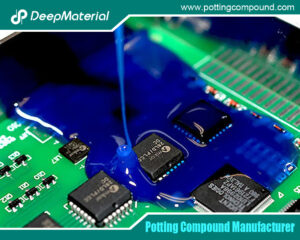
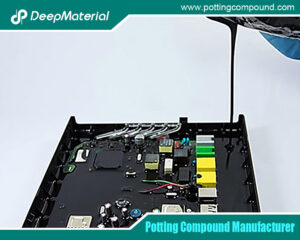
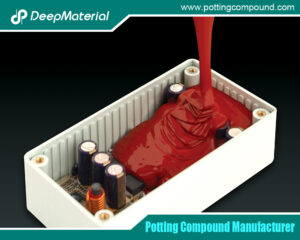
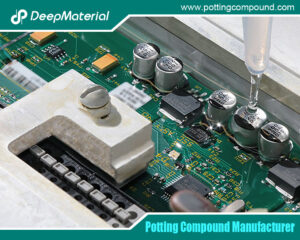
How Does Epoxy Encapsulated LED Work?
